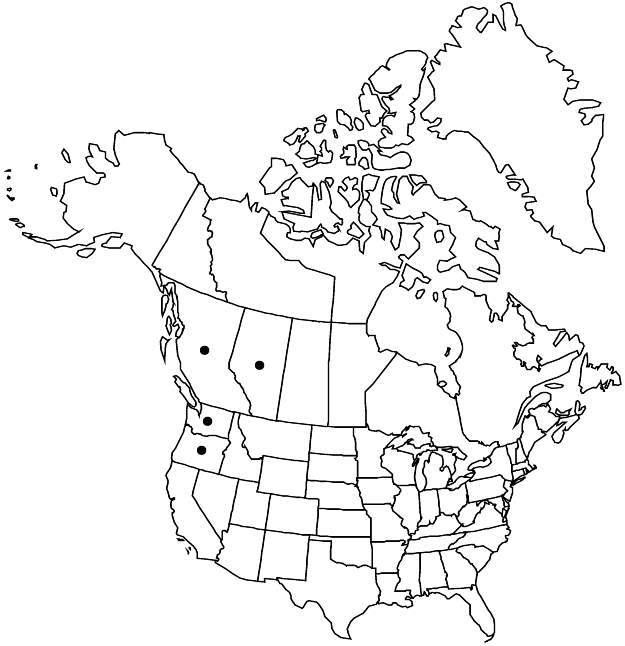Ribes watsonianum
Deut. Dendrol., 197. 1893 ,.
Plants 1–2 m. Stems ascending to erect, copiously grayish-hairy and abundantly stipitate-glandular, very slightly if at all bristly; spines at nodes 1 or 3, 3–7(–10) mm; prickles on internodes absent. Leaves: petiole 2–4 cm, puberulent to pubescent, stipitate-glandular; blade broadly triangular, 3–5-lobed, cleft less than 1/2 to midrib, again 2–5 cleft, 2–5 cm, base truncate or cordate, surfaces thickly puberulent to pubescent, stipitate-glandular, lobes broad, rounded, margins coarsely crenate-denticulate, apex rounded. Inflorescences pendent, solitary flowers or 2(–3)-flowered racemes, 2–4 cm, axis pubescent, stipitate-glandular. Pedicels not jointed, 2–3 mm, pubescent, stipitate-glandular; bracts deltate, 2–3 mm, pubescent, stipitate-glandular. Flowers: hypanthium greenish or with some reddish tinge, tubular-campanulate, 2.5–3 mm, finely pilose, sparingly glandular; sepals not overlapping, reflexed, cream suffused with pink, narrowly oblong, 5.5–9 mm; petals connivent, erect, white, pinkish proximally, oblong, not conspicuously revolute or inrolled, 3.5–4 mm; nectary disc not prominent; stamens as long as or slightly longer than petals; filaments linear, 2–3 mm, glabrous; anthers white, oblong, 0.8–1.2 mm, apex rounded; ovary densely glandular-bristly; styles connate 3/4 their lengths, 6 mm, glabrous. Berries palatability not known, reddish, subglobose, 10 mm, densely yellowish-spiny.
Phenology: Flowering May–Jul.
Habitat: Canyons, ridges
Elevation: 1300-2200 m
Distribution

Alta., B.C., Oreg., Wash.
Discussion
Ribes watsonianum occurs in the Cascade Range of Oregon, Washington, and British Columbia, and in Alberta. Analysis of combined datasets of ITS, ETS, psbA-trnH, and chloroplast restriction sites placed R. watsonianum as sister to sect. Grossularia (L. M. Schultheis and M. J. Donoghue 2004).
Selected References
None.